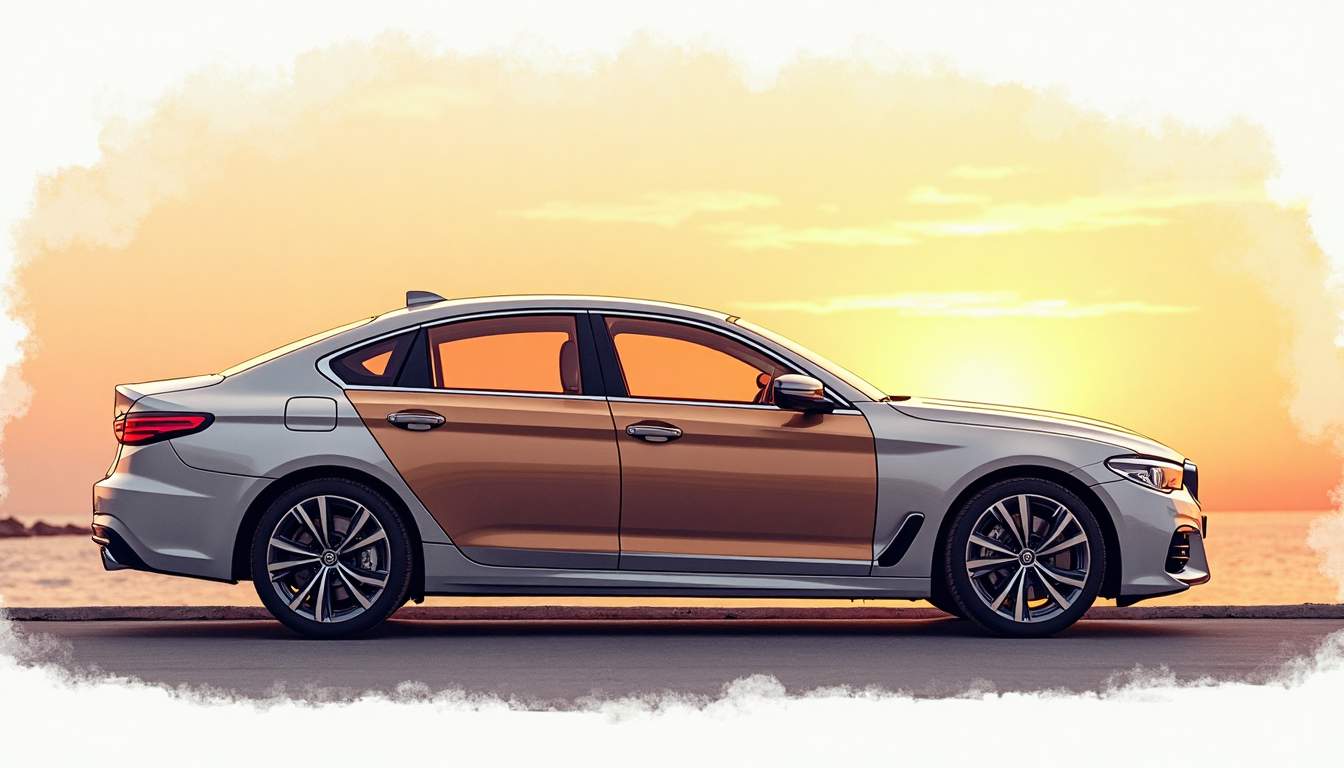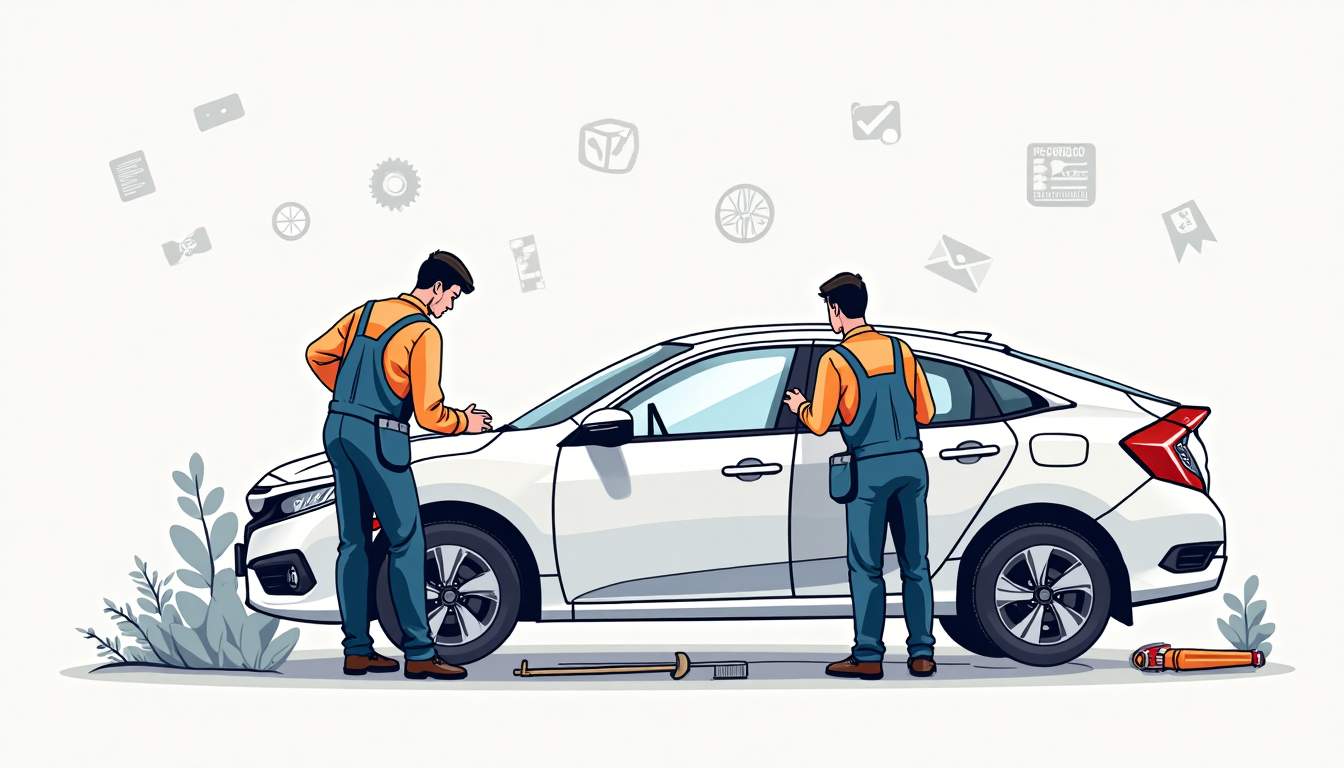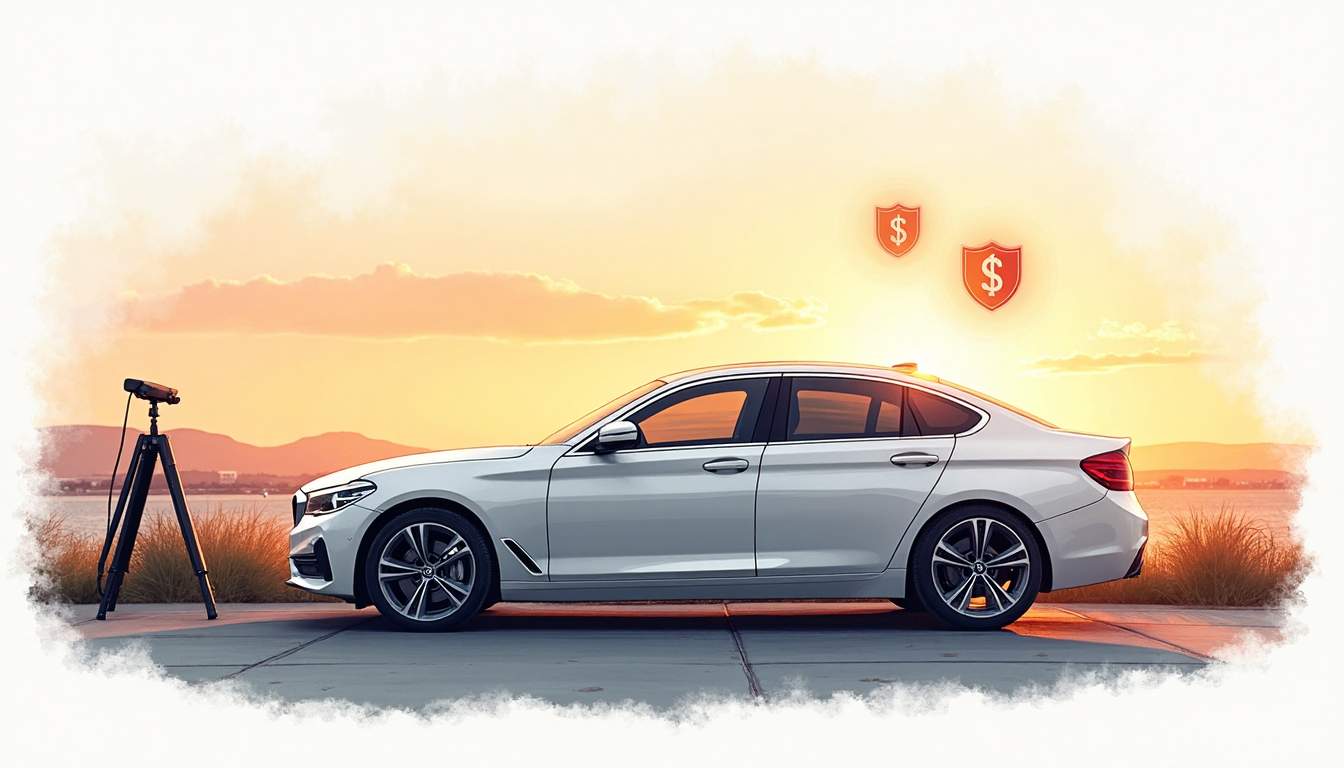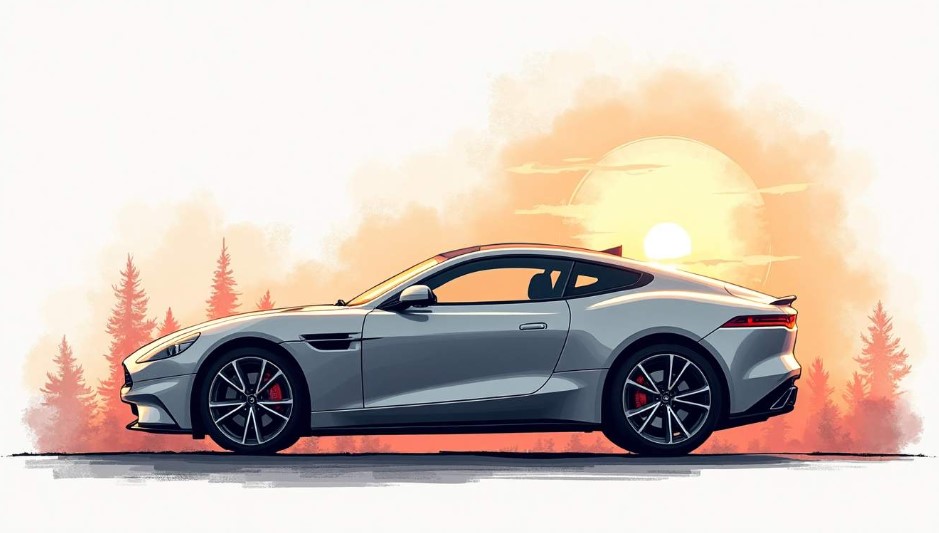Car windows are more than transparent barriers they offer a first line of defense against sun, heat, prying eyes, and shattered glass. Professional window tinting transforms ordinary glass into a multifunctional layer that enhances comfort, privacy, safety, and style. This article explores why professional tinting is worth the investment, what to consider before choosing a film, how the installation process works, and how to maintain the tint so it continues protecting the ride for years.
Why Tinting Matters: Benefits Beyond Aesthetics
At a glance, vehicle tinting gives a sleek, finished look. The real value extends far beyond cosmetics. Tinted windows reduce solar heat gain, block harmful ultraviolet (UV) rays, increase privacy, and improve safety. For drivers in sunny climates, those benefits translate to a cooler cabin, reduced reliance on air conditioning, and less interior fading. Tinting contributes to a more comfortable drive and lower energy consumption.
Security gains are also tangible. Many window films add a layer of shatter resistance, helping keep shards in place if the glass is broken during an accident or attempted break-in. Privacy is improved because darker windows limit visibility into the cabin, protecting personal items and occupants. Finally, certain high-quality tints come with infrared and ceramic properties that block heat more effectively than basic dyed films, offering superior protection for both passengers and electronics.
When selecting a film, it helps to understand measurable specifications: visible light transmission (VLT) tells you how much light passes through the glass, while UV rejection is typically expressed as a percentage, with premium films blocking more than 99% of UV-A and UV-B rays. Infrared rejection and total solar energy rejection (TSER) indicate how effectively a film reduces heat from sunlight; ceramic and multi-layer metalized films tend to score highest on these metrics. Considering these numbers alongside your climate and driving habits makes it easier to choose a tint that balances comfort, visibility, and compliance.
Practical considerations also matter: installation quality, warranty coverage, and local regulations. Professional installers ensure precise cuts, proper adhesion, and minimal bubbling or delamination, and reputable shops often offer multi-year warranties against peeling and discoloration. Since laws on allowable tint darkness and placement vary by state and country, checking legal limits before tinting can prevent fines and required removal. For expert advice and quality service, visit OC Tint Solutions. Routine care with gentle, ammonia-free cleaners and a break-in period before lowering windows will extend the life and appearance of the film.
Types of Tint Films: Which One Fits the Ride?
Not all tints are created equal. The market divides window films into several categories: dyed, metallic, carbon, ceramic, and hybrid films. Each type has distinct performance characteristics, cost points, and aesthetic effects. Understanding the differences makes it easier to choose a film that meets practical needs and budget.

Dyed Films
Dyed films are the most economical option and rely on a layer of dye to absorb sunlight. They darken windows effectively and offer basic UV protection. However, dyed films tend to fade over time and provide limited heat rejection compared to higher-end films. For drivers seeking a budget-friendly darkening effect, dyed films can be adequate, but longevity and thermal performance are lower than other options.
Metallic Films
Metallic films incorporate metal particles that reflect heat and strengthen the glass surface. These offer improved heat rejection and durability versus dyed films. A downside is potential interference with electronic signals such as GPS, radio, or cellphone reception. Modern metallic films have improved signal compatibility, but checking specifications is important for vehicles relying heavily on electronic systems.
Carbon and Ceramic Films
Carbon films provide a matte finish and excellent heat rejection without the signal interference associated with metalized films. They resist fading and maintain a stable look over time. Ceramic films are the premium option: they use non-conductive ceramic particles to block infrared and ultraviolet light while allowing visible light transmission. Ceramic tints deliver superior thermal performance, clarity, and longevity. Although pricier upfront, ceramic films often offer the best value for drivers who prioritize performance and durability.
Legal Considerations: Tint Laws and Compliance
Tinting rules vary by state, province, and country. Regulations typically govern the allowable level of visible light transmission (VLT) for different windows on the vehicle, reflectivity limits, and sometimes color restrictions. Front windshield tints are frequently limited to a strip at the top, while rear and side windows often have more leeway.
Noncompliant tinting can result in fines, required removal, or complications during vehicle inspections. Professional shops stay current with local laws and will advise on legal options that meet performance goals. Some jurisdictions offer medical exemptions for darker tints; documentation requirements apply. Before tinting, confirm local regulations and request compliance certificates when getting professional installation.
Choosing a Professional Installer: What to Look For
Quality installation is as important as film selection. An expert installer ensures the film adheres evenly, free of bubbles, dust, and creases. A poor installation can ruin the look and reduce the effectiveness of the tint. Selecting a reputable shop minimizes risk and protects the investment.

Experience and Reputation
Look for installers with years of experience, customer reviews, and before-and-after photos. Word-of-mouth recommendations from friends, family, or online community groups can be invaluable. A consistent track record of satisfied customers usually indicates reliable workmanship and service.
Warranty and Certification
A good installer offers a warranty that covers bubbling, peeling, discoloration, and adhesive failure. Manufacturer-backed warranties provide additional peace of mind because they reflect confidence in the film quality itself. Also verify whether installers carry certifications from film manufacturers or industry organizations — these credentials suggest familiarity with best practices and up-to-date installation techniques.
Materials and Techniques
Ask about the brands and types of film available, and permit the installer to explain why a specific film suits a particular vehicle. Professional shops use tools like plotters to cut film precisely and climate-controlled workspaces to ensure optimal adhesion. Avoid installers who use only a one-size-fits-all approach or hastily apply film without proper surface preparation.
The Installation Process: What to Expect
Installation typically takes a few hours to a full day depending on the vehicle and the complexity of the job. Preparation is key: windows are cleaned thoroughly to remove contaminants that can cause bubbles, and any trim may be temporarily removed to allow film to wrap edges neatly. Precision cutting ensures a custom fit for each window.
Technicians use specialized squeegees and heat guns to conform the film to curved glass and remove moisture and trapped air. After installation, windows may remain slightly hazy or show moisture for several days while adhesive fully cures. Most shops recommend avoiding rolling down windows for a specific period and keeping the vehicle in a shaded area to promote proper curing.
Maintenance and Care: Extend Tint Life
Proper maintenance keeps tint looking fresh and performing well. Initial care often involves waiting a few days before cleaning inside surfaces, and after that, gentle cleaning techniques preserve the film’s integrity. Using the wrong cleaner or abrasive tools can scratch or peel the film prematurely.
Cleaning Tips
Use a soft microfiber cloth and a mild, ammonia-free cleaner to wipe tinted windows. Avoid razor blades, scouring pads, and paper towels that can scratch the surface. For stubborn spots, a plastic scraper designed for films works better than metal blades. Clean from top to bottom and support the film edges to prevent lifting during deep cleaning.
Long-Term Care
Protect tinted windows from prolonged direct exposure to harsh chemicals, such as those found in some aftermarket wheel cleaners or battery acid splashes, which can damage film. Parking in shade or using a car cover reduces UV stress and heat cycling, both of which extend film life. Regular inspections for bubbles, peeling, or edge separation allow early correction before damage accelerates.
Cost Considerations: Is Professional Tinting Worth It?
Pricing depends on film type, vehicle model, number of windows, and regional labor rates. Basic dyed films are the most economical, while ceramic films command a premium. Installation costs are higher for complex vehicles with small, curved, or fixed glass components, and luxury cars may require more meticulous work.

Consider tinting as an investment: potential savings on fuel and air conditioning, reduced interior replacement and maintenance costs, and increased resale value. A professionally tinted vehicle often attracts buyers looking for added comfort and privacy. When comparing quotes, prioritize quality materials and a reliable installer over the lowest price to avoid costly rework down the road.
Common Myths and Misconceptions
Several myths about tinting persist, often discouraging drivers unnecessarily. One misconception is that all tints make driving at night dangerous. Properly selected films with the right VLT can provide glare reduction without compromising night visibility. Another myth holds that tinting automatically causes electronic interference; while older metallic films could interfere with signals, modern films — especially ceramic — minimize or eliminate that problem.
Some assume tinting always voids vehicle warranties. In most cases, tint itself does not void manufacturer warranties if installed correctly and without damage to electronic components. Still, using authorized shops and reputable products prevents warranty disputes. Address specific concerns with both the installer and the vehicle manufacturer to ensure compliance.
Real-Life Scenarios: When Tinting Makes a Difference
For a commuter enduring blazing summer days, tint reduces interior temperatures and fatigue. In family vehicles, tint protects children’s skin from UV exposure and helps keep car seats and upholstery from fading. For rideshare drivers or anyone who transports valuables, tint offers privacy and a deterrent against opportunistic theft. Even for short trips, reduced glare improves driver focus and comfort.
In regions with harsh winters, tinted windows help maintain a more stable cabin temperature and reduce glare off snow. Tinted glass also provides a safety benefit by helping hold broken glass together in a collision, reducing the likelihood of flying shards.
Final Thoughts: Balance Style, Safety, and Function
Professional tinting elevates both the look and function of a vehicle. Choosing the right film and an experienced installer ensures benefits like heat rejection, UV protection, privacy, and safety without sacrificing visibility or compliance with local laws. The upfront cost pays dividends through improved comfort, reduced interior wear, and enhanced security.
Research options, verify local regulations, and select a reputable installer who stands behind their work. With thoughtful selection and proper care, tinted windows become a durable, valuable upgrade that protects the ride and enhances the driving experience for years to come.





